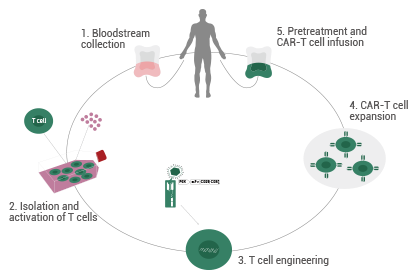The future of targeted alpha therapy development and manufacture

Following the first industrial-scale facility for targeted alpha therapy (TAT) production in Europe beginning construction, in this exclusive Q&A, Julien Dodet, CEO of Orano Med, elaborates on the key trends in radioligand therapeutics and why TATs hold significant advantages as cancer treatments.


Last month, construction began on Europe’s first industrial-scale facility dedicated to the production of lead-212 based radioligand therapies. Julien Dodet, CEO of Orano Med discusses the company’s approach to developing and manufacturing radioligand alpha therapies and predicts the key factors that could impact the field in the next five years.
A report from Technavio suggests that due to trends in the nuclear medicine market such as isotope production, the radiopharmaceuticals market will grow by $4.61 billion between 2022 to 2027.
“Beyond cancer, disorders such as thyroid and cardiology are also increasingly utilising radiopharmaceuticals, contributing to heightened demand [particularly in the US region],” a Senior Analyst at Technavio stated.
radioligand therapeutics are expected to grow by 30 percent per year over the next 10 years”
Dodet expanded on this prediction, highlighting that based on the 2023 MEDraysintell report, radioligand therapeutics are expected to grow by 30 percent per year over the next 10 years.
What are the top three current trends for radioligand therapeutics?
Following the success of Lutathera and Pluvicto, oncologists foresee that radioligand therapies will become a more prevalent modality in oncology.
The second trend is the emergence of targeted alpha therapies (TATs), exhibiting potential efficacy surpassing currently marketed beta therapies, as illustrated by the numerous ongoing clinical trials.
Lastly, there is growing prominence and interest in radioligand therapeutics within major pharmaceutical companies, who are increasingly investing in this field, evident through recent acquisitions of Point Biopharma and RayzeBio.
What makes targeted alpha therapies a promising new approach against cancer?
Traditionally, radionuclide therapy utilised beta particles since beta emitters were more easily available. However, by employing alpha particles, TAT offers two crucial advantages.
Firstly, alpha particles exhibit greater biological effectiveness by inducing irreparable DNA double-strand breaks, minimising the risk of resistance or immune escape in tumour cells. Compared to beta emitters, only a minimal number of alpha particles are needed to efficiently kill cancer cells. Secondly, alpha particles have a short emission range and concentrate radiation within a few cell diameters. This enhances and focuses cytotoxicity towards cancer cells while sparing nearby healthy ones. This unique combination positions TAT as a potent and targeted approach in cancer therapeutics.
What are two key data highlights from the Phase II clinical trial for AlphaMedix?
The Phase II clinical trial for Orano Med’s candidate AlphaMedix (212Pb-DOTAMTATE) is still ongoing and top-line data are expected in mid-2024. Encouragingly, we have seen that the target response rate has already been achieved and is consistent with the results of the Phase I trial (treatment well-tolerated and an overall response rate according to RECIST 1.1 of 62.5 percent for the gastroenteropancreatic neuroendocrine tumours (GEP-NET) patients who had never received radioligand therapy). Based on these promising results, the US Food and Drug Administration (FDA) granted Breakthrough Therapy Designation to AlphaMedix in February 2024.
What is the significance of ATLab (Alpha Therapy Laboratory) being Europe’s first industrial-scale facility dedicated to the production of targeted alpha therapies?
Development of targeted alpha therapy has long been hindered by a lack of supply of alpha emitters meeting radiopharmaceutical purity standards and reliable production capacity to meet global needs”
Development of targeted alpha therapy has long been hindered by a lack of supply of alpha emitters meeting radiopharmaceutical purity standards and reliable production capacity to meet global needs. Orano Med has developed and industrialised a patented, 100 percent chemical process allowing production of Pb-212 on a large scale.
Moreover, with a unique and proprietary source of raw material (Thorium-232), we are autonomous with practically unlimited supply of Pb-212. Orano Med is now building industrial facilities throughout the world for the commercialisation its drugs.
With ATLab Valenciennes preparing to harness a manufacturing capacity of 10,000 doses for lead-212 based radioligand therapies by 2025, what is Orano Med doing to ensure it can produce ten times this quantity by the end of the 2030?
Orano Med is investing heavily to further develop its industrial capabilities in France to produce large-scale quantities of very high-purity Thorium-228, the precursor of lead-212, from its proprietary source of Thorium-232. The chemical process has been developed and optimised and is ready for high-scale production.
This investment also enables the addition of further production lines to increase production capacity up to 50,000 doses per year for each ATLab. Moreover, the construction of other ATLabs should also be launched shortly to cover global needs.
What are Orano Med’s plans for other international facilities? How will this support future global development of radioligand therapeutics?
Orano Med is currently finalising a sister facility of the ATLab Valenciennes in Indianapolis, US. The construction started a year ago and the Indianapolis ATLab should produce its first dose by mid-2024. From this date, this facility will be able to produce 212Pb-conjugated drugs and to deliver them throughout the US, first for the AlphaMedix Phase III trial and then for commercialisation.
What are the three main changes you foresee impacting the sector in the next five years?
an array of new isotopes and drugs, including targeted alpha therapies, is poised to enter the market as ongoing clinical trials progress”
Firstly, an array of new isotopes and drugs, including targeted alpha therapies, is poised to enter the market as ongoing clinical trials progress. Moreover, these treatments should also move up the treatment lines and replace current standards of treatment.
Secondly, the field awaits substantial investments from pharmaceutical companies, reflecting a rapidly growing interest in radioligand therapies.
Lastly, the realisation of industrial production investments, especially for Actinium-225, remains a critical factor, and the sector will closely monitor if these materialise within the projected timelines.
These elements collectively define the evolving landscape, shaped by clinical advancements, substantial investments, and strategic industrial developments.


About the interviewee
Julien Dodet is CEO and President of Orano Med. Julien began his career at Saint Gobain managing international industrial projects before moving to management control. He then worked at BCG from 2004 to 2011, where he developed expertise in the energy, engineering, and high-tech sectors.
Julien joined Areva in 2011, initially working in the group’s strategy department before taking up the position of Chairman and General Manager of Areva Nuclear Power in China. Julien is a graduate of the École Polytechnique and holds a Master of International Business from the Ecole Nationale des Ponts et Chaussées.
Related topics
Anti-Cancer Therapeutics, Clinical Development, Drug Development, Drug Manufacturing, Drug Markets, Industry Insight, Interviews, Manufacturing, Production, Research & Development (R&D), Technology, Therapeutics
link








